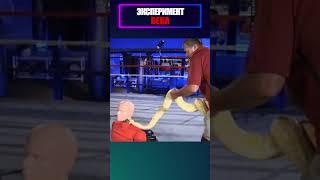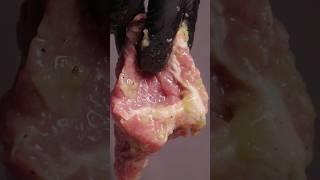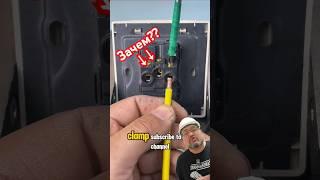
Build a high impedance active RF/AF probe with amplifier. Ideal for radio and amp repairs. #PCBWay#
Комментарии:

I'm curious why you add a large filter capacitor to your battery supply?
Ответить
mr carlson lab has something like this i guess i need to finish video in a bit lol
Ответить
Awesome job and tutorial!! Almost as cool as your clever dimbulb tester which is why I originally subscribed!! Just wondering how this probe compares to Mr. Carlson's Super Probe? Thanks again.
Ответить
Hot glue - oh pahleez - gland it needz !
Ответить
Is this a kit or just the boards. If it is indeed a kit can you post a link to it. I could not locate a search window on the website. Appears to be an OEM service only.
Ответить
Hi, Just wondering if you could provide the order # of the required module to build the high impedance active RF/AF probe.
Ответить
Again I have a construction question :^) what diameter tube fit the probe board best?
Ответить
I think I'll build one. Just by chance I have a Grundig Satellit 700 on my bench now, the FM local oscillator appears dead, MF and HF bands are good, FM +5V bus good. Replacing CT505 (local osc transistor) accomplished nothing.
Ответить
The Velmann kit works absolutly fine for most apps7
Ответить
Pro- probes are impotant - for the depth for repair works.Possitive versus Negative - SIMPLE AS THAT
Ответить
Nice.
I can actually use the probe for my amature radio builds & it's within my skill set unlike high voltage projects, so definitely on my to do list.
I find old aluminum tube lawn furniture is a great source for metal tubing and have made several VHF antennas with it and apparently due to its fairly large diameter the interval of good impedance match was much broader than when I used 12 gauge wire.

I need help I just did a nice restoration of a Heathkit A-9c and came out great and is in great condition it sounds very good nice mids and deep bass with the pair of 6l6s
So I’m getting horrible alien digital sounds when I turn up the volume 1/4 way and louder to full volume
I tried everything it’s away from the speakers no wires are crossed over the inputs I did change the 12ax7 tube and the 12au7 it got about 15 percent better
Any suggestions on blocking this I know my HH Scott 222c has a shield for the preamp pots I hope I don’t have to do this and it’s not ac hum it’s dead quiet it will still make This alien noises with no input

Cool! I wonder how this compares to the Auto RF/AF Probe by Restore Old Radios?
Ответить
Excellent, Thx!
Ответить
ok, then.
Ответить
How much
Ответить
Price
Ответить
Hi and thanks for your informative vid.
Q: why exactly does the LM386 to speaker require a capacitor to couple it? (Apologies, I am a novice 🥴 and your answer may well explain why my amp and speaker combo isn’t working in another circuit)

Why is at PCBWay 5 x this pcb over 50 Euro while all other prints like the leakage tester or tube tester are all 5 EUR for 5 ?
Ответить
Nice !
Ответить
Great Video My needs are - looking at yours and Carlson. Needs - Sniff out noisy components for Vintage Receivers Like Pioneer SX- since they have a lot of Noisy transistors and RF I think? to sniff out High FHZ oscillation for Amplifiers like Phase Linear 400 II and 700II - Can this one do it? and Carlson probe do it? Were can I buy boards kit? ebay? (or do you have to create account and they make them)
Ответить
Hello Manuel, a simple way to increase the input impedance and decrease the Miller effect would be to change the single input FET to a cascode input using two FETs remaining everything the same.
Ответить
Could you sell some of your pcb:s? PCBWAY minimum is 5 boards for each project and around 50 bucks / order + shipping + tax. It eats if anything the idea of DIY =/
Ответить
Hello, very cool project . I am going to restore tube ham radios . So very needed . The pcb site is saying 54.00 for 5 boards .
Ответить
I am not going to watch you build it because the schematic was what I was interested in seeing. I do have a few pointers for someone designing one of these.
2N5457 has 7pF of gate capacitance and 3pF drain to gate.
The 310 is about the same.
I would use parts in a SOT-32 package. They can be soldered and you get less effect from leads.
Parts with numbers like xxx4117, xxx4118, xxx4119 have a lower capacitance. They will work up to about 50MHz with careful layout.
If you change the input section to be a cascode followed by a "voltage follower", you can get more impedance transformation in the stage.
Alternatively, you can add a PNP common emitter gain stage to add a little gain.
A small resistance in series with the source capacitor for the input pushed the input impedance up a bit more.
You can get even higher impedance at the cost of gain by doing this with the 3 transistors with PNP version:
A slight feedback from the collector of the PNP back to the source can make the source want to go positive when the gate does. The Gate to Source capacitance will then have less AC voltage on it than the input and less current will flow in it. This makes the impedance a lot higher. You can get below 1pF of input capacitance with this method.
If you use an NPN BJT in the upper transistor of the cascode, you can make the base of that transistor AC coupled to the JFET's source.
(You can even apply a bit more feedback to it with great care)
This has the effect of making the drain of the JFET actually swing positive a little when the gate goes positive. This can take the drain to gate capacitance out of the picture.
The result can be a probe that you can just bring alongside a wire to sniff for a signal.

It would be very useful if we had the option to make 2 the same, i.e. not the smd option. I volunteer for a repair shed and lots of these would be useful
Ответить
Interesting project! Also looking at mr Carlsons super probe! It is a no contact probe so impedance not an issue. It is high gain probe amplifier with volume control and a squelch circuit which homes into noisy resistors (i.e. frying eggs, pops, noises) without any electrical contact! Far safer as well if you probe valve circuits and it’s powered by batteries as well! He demos it very well on his iTunes videos!😊
Ответить
I am thinking of copper pipe ( diameter 22mm or 28mm) would make a excellent screened body for the probe with a thin plastic inner liner to prevent shorts! Copper off cuts are easily available from plumbers and copper braid would solder well for ground contact!
Ответить
Could it be used on a FM receiver? If my memory serves me I think on FM they call the detector a discriminator which I think is like a voltage controlled oscillator? Am I right? It sweeps a substantial part of the bandwidth?
Ответить
Hello M Caldeira. All my admiration for your content... I want to ask you if you can build an af/rf probe, complete, for me... I will pay the price you ask... Thank you...
Ответить
Hi, has someone made a SMD version?? Did anyone work out the JFET in SMD format and bias resistors that they wouldn't mind sharing, please. Cheers Darren.
Ответить
I love your videos. A great probe which must prove very useful. If it was mine I would put some heat shrink over the metal tube just in case ⚡️.
Ответить
I use an oscilloscope probe in my signal tracer.
Best Regards.

Where can I purchase the PCB's
Ответить
Hi, Since it appears that you have used balanced audio cable for your RF probe's flex, I presume that the impedance of this cable is not important. Why is this? I have seen other active probe designs where the cable specified is either RG178 or RG174 (both 50 ohm coax cables). Is it just so the latter can be matched to the impedance of oscilloscopes, spectrum analysers, etc?
Ответить
Hi. I'm a student from Australia. This is a great idea. Is this project in a kit form? If not, are schematics and parts list for available for it please? I can buy the components but 5 PCB boards would be to many for me.
Ответить
5 PCB's will cost me $AU103 wow expensive.
Ответить
Thanks for your reply.
Ответить
Perhaps you can use the enclosure of a solder pump. I build the one from Mr Carlson his channel and they used that enclosure. Good luck from Holland. Ron
Ответить
Very nicely executed and explained! The device performs exceptionally well. One question... You tested it on the IF and AF stages with excellent results, is this capable of picking up the signal at say, the detector stage of a regenerative receiver?
Ответить
Nice project ..would be great to create it all to fit in probe enclosure, add alc (auto level control ic so manual adjustment is not necessary and you have at the end 3.5 mm jack fir headphones.
Actually 25 years ago I made one (fit in parker pen enclosure).

É um aparelho muito interessante antigamente eu usava Mini Jet 15 É também era muito bom .
Ответить
Bună ziua. Cum pot comanda două seturi de PCB pe care să le expediați in Romania. Mulțumesc
Hello. How can I order two sets of PCBs to ship to Romania. Thank you

Brilliant video and tutorial as usual and I will be ordering a pcb and donating, however I'd be grateful for a parts list. I'm a little confused as what I need and where to order. I'm an English expat living in mainland Portugal ...
Ответить
You can protect the gate of the JFET just like you protected the + supply with the 1N4007, but instead use two 1N4148 diodes. One 1N4148 from the gate to ground with the cathode to the gate. The other from the gate to the + supply with the cathode to +. Both diodes will be reverse biased normally, and should affect the circuit minimally. Any excessive voltage will be clamped to + and - supply.
Thanks for this good bench test equipment.

SMD equivalent of 2N5457 JFET transistor is MMBF5457 (SOT-23 case TO-236). The manufacturer was ON SEMICONDUCTOR or earlier Fairchild.
Ответить
Carlson
Ответить
The led in the hot glue on the back in would be nice. Like the way you think. I am gonna build the probe, inspired to learn about these awesome probes from Mr Carlson s lab. So updates to come. Thank you. J.
Ответить
!["Miho's true form revealed ️" || [absolut necromancer] || #manhwa #short #amv "Miho's true form revealed ️" || [absolut necromancer] || #manhwa #short #amv](https://smotrel.cc/img/upload/STFiT19WQ2xGMGE.jpg)
























